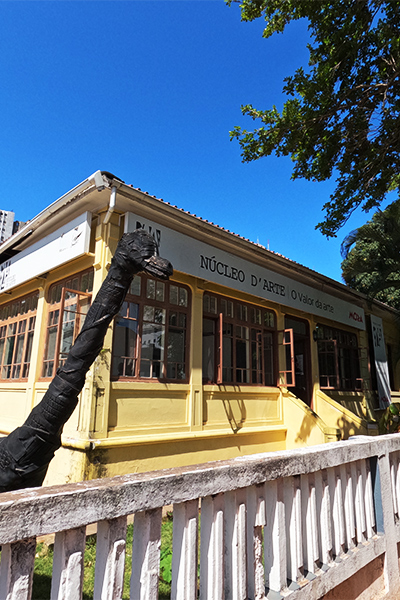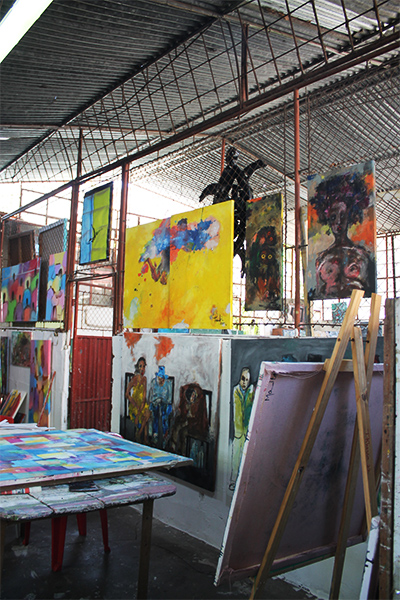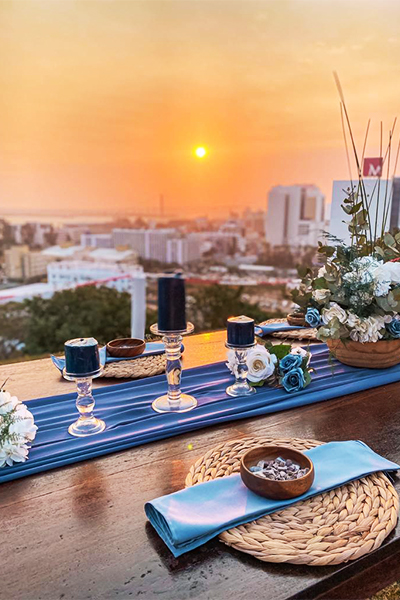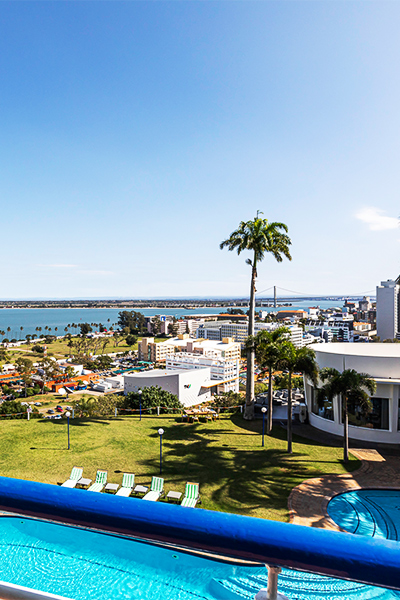A super-quick guide to Maputo
Uncover a thriving arts scene, discover eye-catching architecture and sip sunset beers from up high
For many travellers, Africa is a destination for wildlife and wide-open spaces, not vibrant urban escapes. But Maputo might just change your mind on that score.
Before independence from Portugal, which came in 1975, the capital of Mozambique was known as Lourenço Marques and still today retains a graceful European aesthetic in its grandiose buildings and wide boulevards. It’s also a city built on trade, and the quaysides and ocean make their presence felt, from the fresh ‘LM’ prawns on the menu to the glittering waters off the seafront promenades. Good looks aside, it’s a city that couples a complicated history and a touch of faded grandeur with a sense of irresistible energy.

Since 1922, the hotel known as the ‘grande dame’ of Maputo has stood proudly on a rise overlooking the Indian Ocean, playing host to royalty, celebrities and travellers looking for a haven away from the humid city streets. Indoors, it’s all sweeping staircases and crystal chandeliers, and despite the hotel’s age, a series of refurbishments have ensured that the Polana Serena blends vintage charm with all the mod-cons you could ask for. It’s minutes from the city centre, so convenient for business meetings, but the wide pool terrace and ocean views deliver a laid-back resort feel for relaxing after hours.
serenahotels.com/polana

For nearly a century, Costa do Sol has been a stalwart of Maputo’s culinary landscape. And while the city has changed immeasurably since the Petrokakis family first opened their hotel and restaurant on the outskirts of the city, the seafood here remains as delicious as ever. Don’t miss the crispy prawn rissoles, fresh clams or the vast platters of prawns that Costa has long been famous for. If you want a sea-view table, be sure to call ahead, especially on weekends.
Can’t make it out to Costa? In the city centre Restaurante Piripiri is equally famous for its fiery chicken; marinated overnight and flame-grilled over charcoal, the old-fashioned way.

Step into Núcleo de Arte...

...and you'll find a world of creative endeavours
While Mozambique’s most celebrated artist – the late Malangatana Valente Ngwenya – has a dedicated museum outside of the city, the most accessible creative hub is on Rua da Argélia. Here, the Núcleo de Arte cooperative promotes up-and-coming artists, with workshops and studios where you can watch the painters and sculptors at work.
nucleodeartemaputo.wordpress.com

Alongside the pleasant Jardim Tunduru Botanical Gardens, you’ll find one of Africa’s architectural oddities. The Casa do Ferro, or ‘Iron House’, was built to a design by Alexandre Gustave Eiffel, a man more famous for his Parisian tower. Imported from France for Mozambique’s colonial governor in 1892, the shortcomings of an iron house in the steamy tropics were quickly revealed, and it was mothballed for decades. Today it houses government offices and a small museum.
Maputo’s Natural History Museum is worth a visit as much for the grand colonial edifice as for the intriguing collection of exhibits indoors. These lean heavily towards taxidermy examples of local wildlife, but look closely and you’ll also find pottery displays and a small ethnology exhibit. The somewhat-ghoulish highlight is the collection of preserved elephant foetuses, showing all 22 months of development.

Maputo’s architectural heritage is rich and diverse, as demonstrated on guided tours with Maputo a Pe. These walks lead visitors on an illuminating architectural discovery, from the Art Deco styling of the Cathedral of Our Lady of the Immaculate Conception to the striking Church of Santo António da Polana, which locals dub ‘the lemon squeezer’. Another highlight is discovering the work of Amancio ‘Pancho’ Guedes, the Portuguese-born architect who drew inspiration from Antonio Gaudi and Frank Lloyd Wright in shaping much of the Maputo skyline in the mid-1900s.
maputo-a-pe.com

Across the street from the historic Fortaleza, itself worth a visit, the city’s central market is a colourful assault on the senses. Here, stalls overflow with fresh fruit, vegetables and spices, and you’ll jostle with locals arriving to do their daily shopping. It’s a good place to pick up a few souvenirs, or you can aim for the Saturday craft market at Praça 25 de Junho, where you’ll find a wider range of authentic local products.

On the weekend, make like the locals and head out to the public beaches strung out along the Avenida Marginale, north-east of the city. The sands here come alive with impromptu football games on the tidal flats and the smell of grilling piripiri chicken wafting on the warm tropical breeze.

The perfect sunset spot: Hotel Cardoso

A room with a view at Hotel Cardoso
There’s no better place to toast the end of a day in the city than the pool terrace of the Hotel Cardoso. Set on a hilltop overlooking the baixa, the old harbour precinct, it’s a space for an ice-cold 2M beer – ask for a ‘doish-em’ – as you gaze across to the golden beaches of Catembe over the bay.
cardoso-hotel.com
This restaurant and bar is something of a local secret, providing a lush green oasis in the heart of the city. Tables are scattered throughout the gardens, with friendly wait staff on hand to talk you through the menu of local cocktails and Mediterranean-inspired cuisine.
facebook.com/botanicamozambique
To get a feel for Maputo’s buzzing music scene, look no further than ‘Gil’s’ on Avenida Samora Machel. It’s a tiny space that’s almost always packed with locals, who flock here to hear some of the city’s up-and-coming bands, musical projects and DJs.
facebook.com/GilVicenteCafeBar